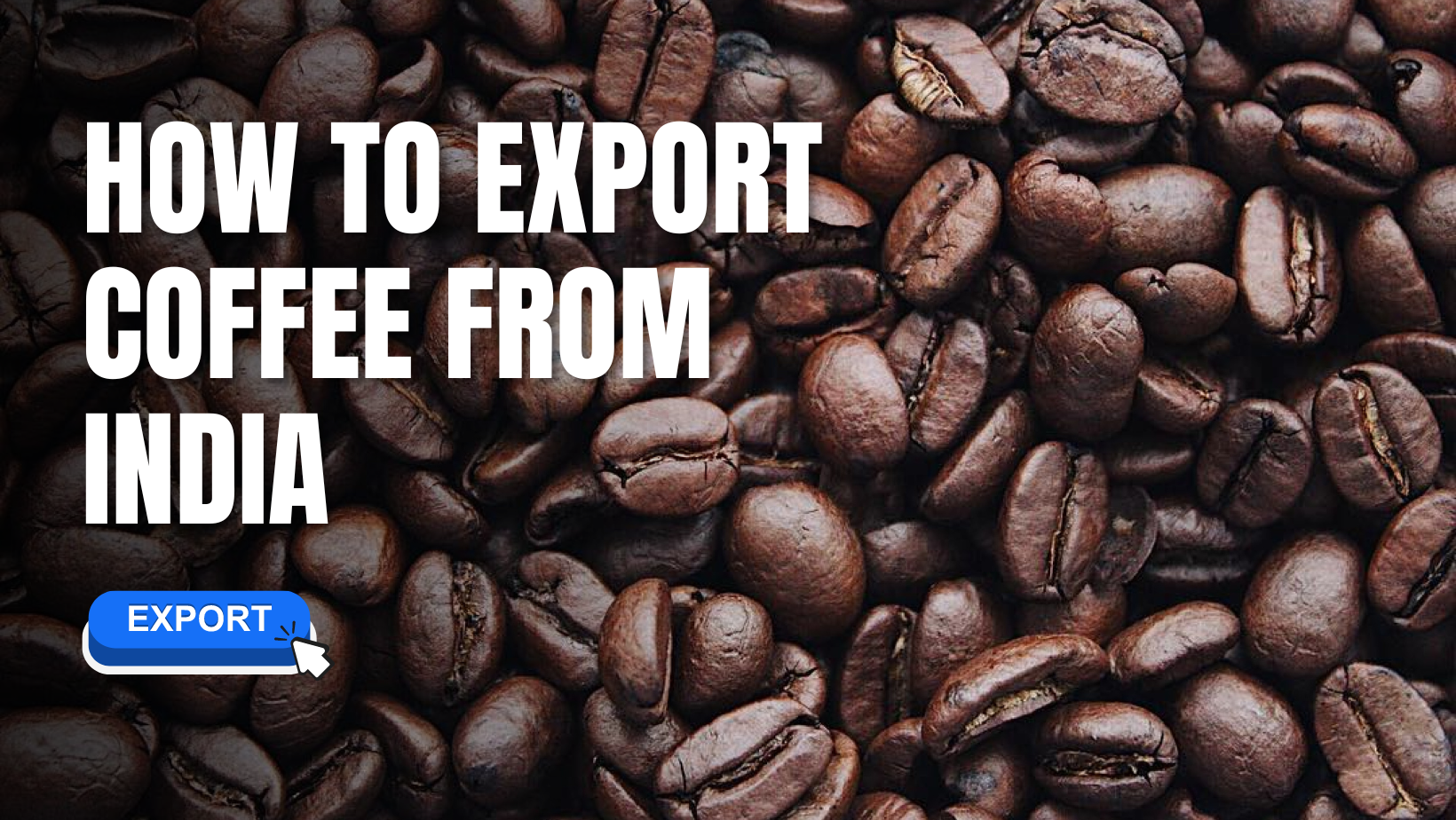
India, known for its rich coffee plantations, is one of the leading coffee producers in the world. it’s essential to understand the regulations, procedures, and market dynamics involved. This blog post will provide a comprehensive guide to help exporters navigate the process, ensuring smooth and successful coffee exportation.
Understanding Coffee Export Regulations in India
1. Registration and Licensing
Board Registration: The first step to export from India is to register with the Coffee Board of India. This body regulates production and export in India.
Import Export Code (IEC): Obtained from the Directorate General of Foreign Trade (DGFT), the IEC is mandatory for all exporters and importers in India.
2. Quality Standards:
Quality Control: The Board mandates strict quality control. export undergoes grading and certification to meet international standards.
Certification: Obtain necessary certifications such as Fair Trade, Organic, and Rainforest Alliance to enhance marketability.
3.Export Documentation:
Commercial Invoice: A detailed invoice outlining the quantity, quality, and price of the coffee.
Packing List: A list detailing the contents of each package.
Bill of Lading: A document issued by the carrier to acknowledge receipt of the cargo.
Certificate of Origin: Certifies that the coffee originates from India.
Phytosanitary Certificate: Ensures that the coffee shipment is free from pests and diseases.

Export Duty and Incentives
Export Duty: As of the latest regulations, there is no specific export duty . However, exporters should stay updated with changes in government policies.
Export Incentives: The Indian government provides various incentives under schemes like the Merchandise Exports from India Scheme (MEIS), which offers duty credit scrips to exporters based on the FOB value of exports.
Export Trends: 2023-2024
Exports have seen significant growth over the years. In the fiscal year 2023-2024, India exported approximately 300,000 metric tons, which translates to around 15,000 TEUs (Twenty-foot Equivalent Units) of containers. The major export destinations include Italy, Germany, Belgium, and Russia, with specialty gaining traction in markets like the United States and Japan.
Major Coffee-Producing States in India
Each known for its unique flavor profiles and types of coffee.
1.Karnataka:
– The largest producing state in India, accounting for about 70% of the total production.
– Major regions: Chikmagalur, Coorg, and Hassan.
– Known for both Arabica and Robusta varieties.
2.Kerala:
– Contributes around 20% to the total production.
– Major regions: Wayanad, Idukki, and Malabar.
– Famous for its Robusta coffee, particularly the Monsooned Malabar variety.
3.Tamil Nadu:
– Accounts for about 5% of the coffee production.
– Major regions: Nilgiris District, Yercaud, and Kodaikanal.
– Produces both Arabica and Robusta, with Nilgiri known for its distinct flavor.
4.North Eastern States:
– States like Assam, Manipur, Meghalaya, Mizoram, and Nagaland are gradually increasing their coffee production.
Steps to Export from India
1.Market Research:
– Identify potential markets.
– Analyze market demand, consumer preferences, and competition.
Having difficulty to finding the right market and good buyers ? Here’s the solution to learn how to effectively accomplish this. Find Buyer And Market
2.Product Sourcing:
– Collaborate with coffee growers or cooperatives in major producing states.
– Ensure sustainable and ethical sourcing practices.
3.Quality Assurance:
– Implement stringent quality control measures.
– Use advanced processing techniques to maintain coffee quality.
4.Logistics and Shipping:
– Partner with reliable logistics providers.
– Choose appropriate shipping methods (air freight for urgent deliveries, sea freight for bulk shipments).
Challenges and Solutions
Compliance with International Standards: Keeping up with the ever-evolving international quality standards can be challenging. Regular training and updating quality control processes can help.
Logistics and Supply Chain Issues: Delays and disruptions in the supply chain can affect exports. Building a robust logistics network and maintaining buffer stocks can mitigate these risks.
Market Competition: The global coffee market is highly competitive. Differentiating your product through quality, sustainability, and branding can provide a competitive edge.
Conclusion
Exporting coffee from India offers lucrative opportunities for businesses willing to navigate the complexities of the international market. By understanding the regulations, leveraging government incentives, and adopting best practices in quality control and marketing, exporters can successfully tap into the global market. Stay informed, plan meticulously, and ensure compliance with all regulations
This blog just scratched the surface of the exciting world of exports! check out this helpful link: lean How to start your export business
Do Follow us on Our Social Media channels to stay ahead in your rice business
